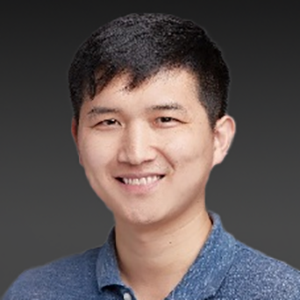Speaker & Supervisor

Prof. PENG Chen-hui
Title: Programmable Active Matter
Abstract:
Active matter is the marvel of nature. The challenge lies in commanding its chaotic behavior. By dispersing swimming bacteria in a liquid crystalline (LC) environment with spatially varying orientation defined by the liquid crystalline polymer networks, we demonstrate control over the distribution of bacterial concentration, as well as the geometry and polarity of their trajectories. Bacteria recognize subtle differences in the topological structures in the LC, engaging in bipolar swimming in regions of pure splay and bend but switching to unipolar swimming in mixed splay-bend regions. In the second part, I will talk about how to remotely programm the reversible and complex morphing in the monolithic liquid crystalline polymer networks, namely liquid crystal elastomer(LCE), by integrating kirigami designs with topological structures. This shape-morphing arises due to the interplay between the custom-cut sample geometry and topology in the material microstructure. We obtained a rich variety of out-of-plane shape transformations including auxetic structures and undulating morphologies by combining different topological structures and kirigami geometries. Different functionalities such as bio-inspired fluttering butterfly, flower bud, dual-rotation light-mill and dual-mode locomotion are realized. Our programmable active matter will open opportunities in future developments of multi-functional devices for soft-robotics, flexible electronics, and biomedicine.
Curriculum Vitae:
Education:
Ph.D. in Chemical Physics Liquid Crystal Institute of Kent State University, USA 05/2017
Employment:
Department of Physics, USTC, China Professor 2022-Current
Department of Physics, University of Memphis, USA Assistant Professor, 2018-2022
Department of Biological Engineering, MIT, USA Postdoctoral Fellow, 2017-2018
Research interests:
- Collective behavior of bacteria and cell monolayer interfacing with anisotropic media
- Non-equilibrium dynamics of molecular and colloidal self-assembly
- Programmable liquid crystal elastomer with kirigami and origami designs
Selected recent publications:
- J. Jiang, X. Wang, O. Akomolafe, W. Tang, Z. Asilehan, K. Ranabhat, R. Zhang andChenhui Peng*, Collective transport and reconfigurable assembly of nematic colloids by light-driven cooperative molecular reorientations,PNAS, 120, e2221718120 (2023)
- J. Jiang, K. Ranabhat, X. Wang, H. Rich, R. Zhang andChenhui Peng*, Active transformations of topological structures in light-driven nematic disclination networks,PNAS, 119, e2122226119. (2022)
- Chenhui Peng, T. Turiv, Y. Guo, Q.-H. Wei, and O. D. Lavrentovich*, “Command of active matter by topological defects and patterns,”Science, 354, 882 (2016).
- Chenhui Peng, T. Turiv, Y. Guo, S. V. Shiyanovskii, Q.-H. Wei, and O. D. Laverntovich*, “Control of colliodal placement and assembly by modulated molecular orientaion in nematic cells,”Science Advances, 2, e1600932 (2016).
- Chenhui Peng, Y. Guo, T. Turiv, Miao Jiang, Q.-H. Wei, and O. Lavrentovich*, “Patterning of lyotropic chromonic liquid crystals by photoalignment with photonic metamasks,”Advanced Materials, 29, 1606112 (2017).
